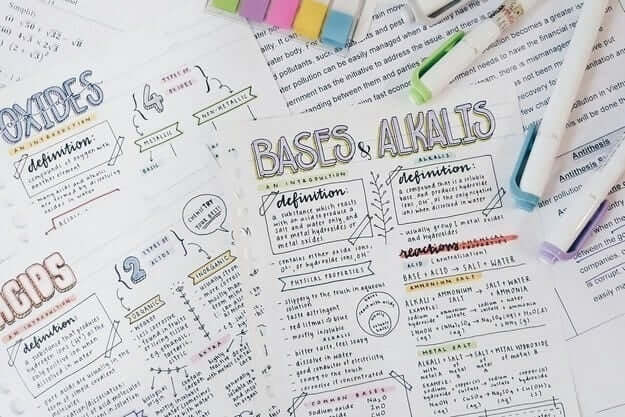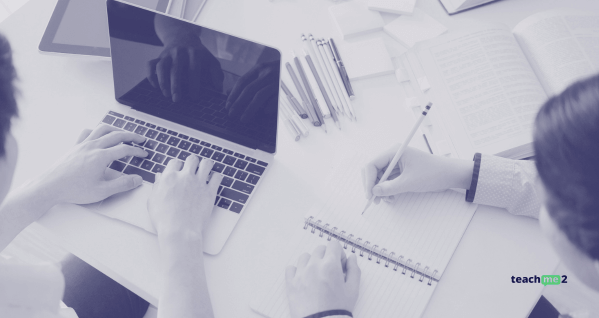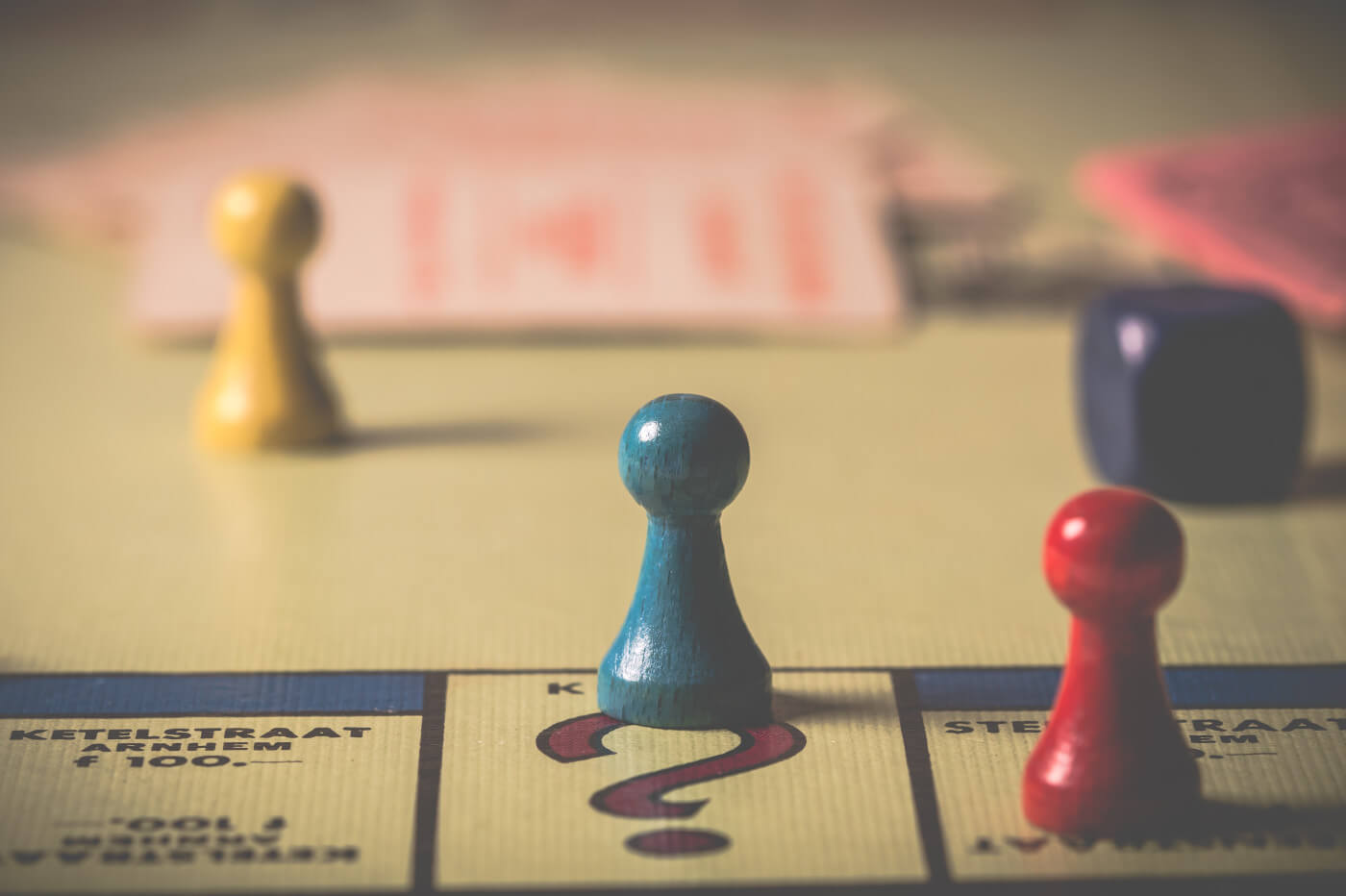Why Copying Notes Isn’t Enough for Effective Learning

When I was a high school teacher, I saw students trying everything to study better. Before an exam, they crowded into corridors with notebooks and exam pads, burying their heads in reams of handwritten notes – highlighted, colour-coded, sometimes glittered and bejewelled – hoping that reading and re-reading and re-re-reading would just make things stick. Many believed that having good notes leads to good studying, which in turn leads to good marks.
But that’s not entirely true. Notetaking is an important component of learning and good note-takers are often good at studying, but the mere act of copying notes, page after page, won’t cause effective memorisation or deep learning. Nor does bribing your friends for their notes.
In fact, most of my students would have been better at studying if they hadn’t relied on notetaking as their primary study method.
If you struggle to study and you’ve been destroying your hand by copying notes for years in agony without success, here’s why it doesn’t work and what you can do to start studying effectively.
The science behind notetaking
We know that notetaking is an effective learning tool during class. (Research has shown this.) Consider why: what is it about applying a pen to a page that triggers learning?
It has to do with what teachers call active learning, meaning learning that occurs with action on the student’s part. The opposite is passive learning, which is where students sit in a classroom and expect information to lodge itself in the mind just by being in the presence of a teacher.
Think of what happens when you’re in a class or a tutoring session and decide to make a note of something. Hopefully, you don’t write down exactly what the teacher or tutor says – probably because it would take too much time. Rather, your brain decides what information is important, then it finds some way of encoding that content nugget, shortening it into a keyword or quick statement. Your brain might decide to add arrows, diagrams, underlining or highlighting. Then, you actively write, engaging physical movement to reinforce the thinking.
That process, all those things your brain did there, was active learning: you were taking information and repackaging it, repurposing it, playing with it, moulding it into a new form and physically manifesting it through hand motion and ink on paper. The brain formed new neural pathways that were unique to you and how you think.
The mental effort of reorganisation triggers learning.
This is why students who just copy down slides or chunks of material from a textbook struggle with studying. They’re not reorganising actively, only repeating passively.
This applies during class and when you’re studying later. Even if you’ve taken good notes in class, you need to continue to reorganise information during studying.
You can learn actively without copying notes
There are many ways to study actively without copying notes – and they aren’t as labour-intensive as you might think. In my experience as a teacher, these methods are most effective:
1. Highlighting and underlining: Don’t underestimate the power of a simple highlighter! If you’re studying from a block of text, force yourself to find keywords or important lines, and make a physical mark with your highlighter or pen. The motion of the hand and the act of selecting key information is active learning.
2. Visualisation: If you learn best through images, try visualising the content you need to learn. You might create funny scenes, assigning visual associations to key concepts, or just imagine the content in a filmic way. You’re reorganising textual information into imagery.
3. Talking to Yourself (seriously!): This can feel weird, but it’s a powerful technique. While trying to memorise information or learn deeply, talk aloud to yourself as if you were your own teacher or a podcast host doing an explainer. The organisation happens in the process of finding words and explanations, and simplifying ideas for an audience. You’re also activating the brain’s listening processes, which is why speaking aloud works so well.
4. Mindmapping and diagrams: These aren’t notes so much as drawings that map your thinking into diagrammatic form. Mindmaps are popular, but you can use whatever technique gels with you. It could be as simple as writing keywords and drawing arrows to ideas, or jotting down bullet points.
5. Combine different methods: You’ll have even more success if you combine these methods. For example, you could talk to yourself while highlighting, annotate the highlights, then talk through the visualisation you’re imagining, ending with a diagram to summarise what you’ve covered.
The key is to find ways to reorganise the information. Force your brain to grapple. Once those neural paths start forming, you’re on your way!
If you use notetaking, do it the right way
If you have a fondness for notetaking and you really want to use it as a study method (maybe it’s a vibe that gets you into the mood), make sure you keep these points in mind:
• Never copy. Summarise: You should never find yourself copying lists or slides or text verbatim. It wastes time, gives you hand cramp and doesn’t do anything to help you learn. Making summaries is better. They help your brain sift through detail and home in on what’s important. But don’t stop there: you need to do something with your summaries to enhance learning. (You could use some of the techniques mentioned above.)
• Supplement your notes with diagrams: As described earlier, mapping thinking is effective because it helps you put to paper the connections your mind is making. Let your mind tell you intuitively what a concept looks like in a diagram. Group concepts into clusters, sub-groups and channels. This is a potent way to draw down a huge section of work into a clear, logical system. Draw arrows and lines and circles and links and bubbles – whatever your brain tells you makes sense.
• Make an explanatory document: Pretend you’ve been hired as a textbook writer. Take the information you need to study and write a textbook-style explainer, expressing the content as a guide for another student. This can take time, but is a deep form of reorganising. It’s what teachers do in the classroom and they know their stuff!
Conclusion
Let’s summarise (see what I did there?): learning works best when the brain is active and when information is reorganised. Find a technique that makes sense for you and is optimal for the way you think. Let the brain work its magic for you and engage with the mental work!
Resources
Note-taking and Its Impact on Learning, Academic Performance, and Memory – Issa Salame, et al., City College of New York
Notes on Note-Taking: Review of Research and Insights for Students and Instructors – Michael Friedman, Harvard University
The Cornell Note Taking System – Cornell University
Related Articles

Online Tutoring vs. Face-to-Face Tutoring: Which is Right for Your Child?
Whether you are curious about how online tutoring works or are actively searching for an online tutor for your family, this article explains everything you need to know before you start.
Read More

How To Use Games To Help Children Learn
In this article, we will cover a multi-sensory approach to learning that uses games to help children learn more effectively.
Read More

5 Ways To Help Your Child Create Habits That Stick
As parents, it’s our responsibility to help our children create good habits that will instil confidence and productivity as they grow up. This is one way we can set them up for success!
Read More

We help families find their perfect tutor
Help your child improve their grades and get their confidence back.
GET A TUTOR